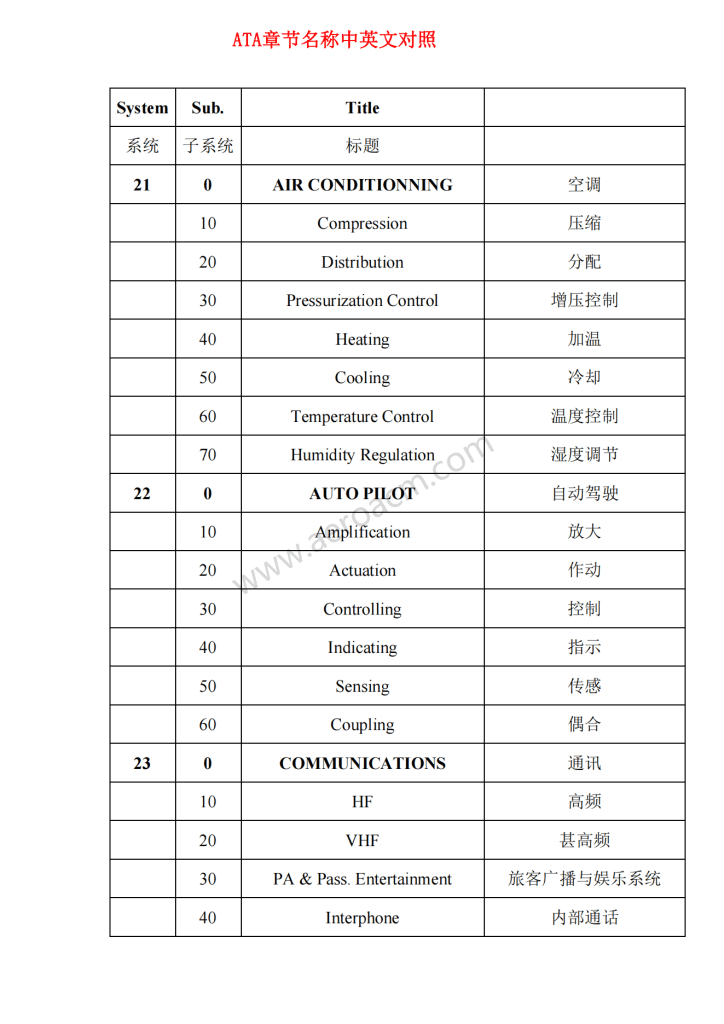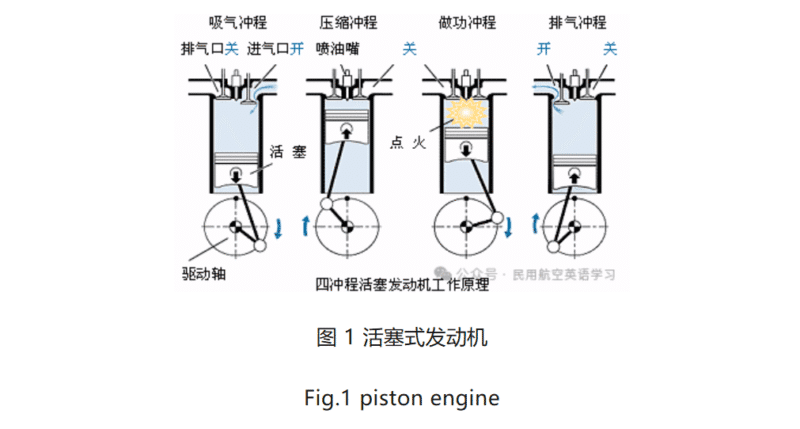静电放电敏感设备的处理
HANDLING OF ELECTROSTATIC DISCHARGE SENSITIVE DEVICES
1. INTRODUCTION 介绍
A. The data in this subject comes from Boeing Process Specification BAC5485. Access to the Boeing Process Specifications is available.
本主题中的数据来自波音工艺规范 BAC5485。可查阅波音工艺规范。
B. The data is general. It is not about all situations or specific installations. Use this data to help you write minimum requirements.
数据为通用数据。并不涉及所有情况或特定安装。使用此数据可帮助您编写最低要求。
C. Refer to SOPM 20-00-00 for a full list of all the vendor names and addresses.
有关所有供应商名称和地址的完整列表,请参阅 SOPM 20-00-00。
2. GENERAL 通用
A. Many electronic line replaceable units (LRUs) contain microcircuits and other devices which can be damaged internally by electrostatic discharges. These units are identified as Electrostatic Discharge Sensitive (ESDS), by one or more of these:
许多电子线路可更换单元(LRUs)包含的微电路和其他装置可因静电放电而损坏。这些单元通过以下一种或几种方式确定为静电放电敏感单元 (ESDS):
(1) The words Electrostatic Discharge Sensitive, Static Sensitive, ESD, ESDS
静电放电敏感、静电敏感、ESD、ESDS 字样
(2) Yellow on the edge of the circuit board or ejector clip
电路板边缘或弹出夹上的黄色字样
(3) A special symbol or label (usually black and yellow) (Figure 1)
特殊符号或标签(通常为黑色和黄色)(图 1)
B. Your body, and the tools you use, can collect electrical energy from many items. Without precautions, you can send this energy through an ESDS device which could permanently damage it. One touch could make the device or component unserviceable. You cannot usually see the energy or the damage.
您的身体和您使用的工具可以从许多物品中收集电能。如果不采取预防措施,您可能会将这些电能通过 ESDS 设备,从而对其造成永久性损坏。只要轻轻一碰,设备或部件就可能无法使用。您通常看不到能量或损坏。
C. The energy can come from your clothing, the floor, the furniture, the equipment, or electrical fields in the air. The precautions send the energy to ground and keep it away from the ESDS devices.
能量可能来自您的衣服、地板、家具、设备或空气中的电场。预防措施可将能量送至地面,使其远离 ESDS 设备。
D. Examples of ESDS parts are microcircuits, discrete semiconductors, film resistors, integrated circuits, hybrid devices and piezoelectric crystals. Typical types include Metal-Oxide-Semiconductor (MOS), such as Complementary MOS (CMOS), P-MOS, N-MOS, insulated gate field effect transistors (IGFET), or Schottky TTL microcircuits.
ESDS 零件的例子包括微电路、分立半导体、薄膜电阻器、集成电路、混合器件和压电晶体。典型类型包括金属氧化物半导体 (MOS),如互补 MOS (CMOS)、P-MOS、N-MOS、绝缘栅场效应晶体管 (IGFET) 或肖特基 TTL 微电路。
![图片[1]-SOPM20-12-02静电放电敏感设备的处理-航修札记](https://aeroacm.cn/wp-content/uploads/2025/03/word-image-4534-1.png)
3. EQUIPMENT 设备
A. Do operations with ESDS items on a special grounded workbench which includes a grounded wrist strap for the person. Typical configurations are shown in BAC5485. If a wrist strap cannot be used, use special static-controlled floor coverings and grounded tools.
在专门的接地工作台上对 ESDS 物品进行操作,工作台应配有接地腕带。典型配置见 BAC5485。如果不能使用腕带,则使用特殊的静电控制地板覆盖物和接地工具。
B. For safety, the wrist strap must have a resistance to ground of 250 kilohms – 1.5 megohms. The wrist strap must touch the bare skin.
为安全起见,腕带的接地电阻必须在 250 千欧-1.5 兆欧之间。腕带必须接触裸露的皮肤。
C. The work surface must be of static dissipative material (BAC5485 Type II, which has a surface resistivity of greater than 105 , but not greater than 109 ohms per square.) A metallic work surface can be used, but this increases the risk of electrical shock. The surface must have a maximum resistance to ground of 1012 ohms.
工作面必须使用静电消散材料(BAC5485 II 型,其表面电阻率大于 105,但不大于 109 欧姆/平方)。可以使用金属工作面,但这会增加触电风险。表面的最大接地电阻必须为 1012 欧姆。
D. Antistatic shop clothing of cotton, antistatic nylon, or some other approved material, must be worn by all persons in the ESDS protected area. (BAC5485 gives typical examples.) All buttons must be fastened. The antistatic clothing must completely cover all personal clothing.
在 ESDS 保护区域内的所有人都必须穿着棉质、防静电尼龙或其他经批准的材料制成的防静电工作服。(所有钮扣必须系紧。防静电服必须完全覆盖所有个人衣物。
E. The soldering irons and vacuum desoldering equipment used on ESDS items must have the electrical properties shown below. To make sure, do tests on the equipment per BSS7339.
用于 ESDS 物品的烙铁和真空脱焊设备必须具有如下所示的电气特性。为确保这一点,请按照 BSS7339 对设备进行测试。
(1) Controller switching (transient voltage) — less than 500 millivolts peak
控制器开关(瞬态电压)–峰值小于 500 毫伏
(2) Pulse energy – less than 0.1 microjoules. This is not applicable to equipment which use controlled metallurgy to keep the temperature constant, such as Metcal units.
脉冲能量 – 小于 0.1 微焦。这不适用于使用受控冶金技术保持温度恒定的设备,如 Metcal 设备。
(3) Magnetic field energy — less than 0.5 gauss
磁场能量 – 小于 0.5 高斯
(4) Steady state leakage — less than 2 millivolts rms (50-500 Hz); less than 75 millivolts rms (above 500 Hz)
稳态泄漏 — 均方根值小于 2 毫伏(50-500 赫兹);均方根值小于 75 毫伏(500 赫兹以上)
(5) Resistance, tip to ground — less than 20 ohms
尖端对地电阻 — 小于 20 欧姆
F. All electrical equipment must be grounded, or must not generate more than 100 volts when tested with a static meter. If the equipment includes a cathode-ray tube (such as an oscilloscope or computer monitor) and generates more than 100 volts, keep ESDS hardware a minimum distance away of 1 meter while the equipment is on or switched on or off.
所有电气设备必须接地,或用静电计测试时产生的电压不得超过 100 伏。如果设备包括阴极射线管(如示波器或计算机显示器),且产生的电压超过 100 伏,则在设备开启或关闭时,应与 ESDS 硬件保持至少 1 米的距离。
4. HANDLING PRECAUTIONS 操作注意事项
A. Do not touch an ESDS part or assembly unless you are grounded by a wrist strap or heel straps.
除非腕带或脚跟带接地,否则不要接触 ESDS 零件或组件。
B. When you touch an ESDS part, touch the body of the part first before you touch the wires or leads.
触摸 ESDS 零件时,应先触摸零件的主体,然后再触摸导线或引线。
C. If an ESDS part has the protection of conductive foam or a wire across the leads, do not remove this protection until immediately before you install the part.
如果 ESDS 零件有导电泡沫或导线保护,在安装零件之前,请不要拆除这种保护。
D. Give ESDS parts and assemblies the protection of a conductive or static dissipative container or cover when not in work. BMS 15-15 bags are recommended.
不工作时,给 ESDS 零件和组件提供导电或静电消散容器或盖子的保护。建议使用 BMS 15-15 袋。









暂无评论内容